#private funding consultants
Text
Global Star Capital Founder Rich Cocovich met today with new clients in Toronto who engaged his expertise in aligning private capital for their $15 Milllion USD luxury housing project. Since 1991, Cocovich has assisted project principals in 126 countries and all 50 States with their project funding needs. We are experts who are sought after by corporations, governments and individuals to establish direct relationships with private investors and families worldwide wide. We are not brokers. Over $30 Billion in private capital awaits the project that we represent. Our protocol and engagement fees are etched in stone. They are non-negotiable. If you are a solvent project principal who understands that high end expertise and experience is not free, not contingent, not pro-bono and not wrapped into a closing, then you are welcome to apply at our main company website www.globalstarcapital.com, beginning in the Our Process section. Within seven days of meeting Mr. Cocovich in person, green lights from investor facilitators will be established as part of our protocol.
#globalstarcapital #globalstarcapitalreviews #richcocovichreviews #richcocovich #cocovich #privateequity #privatefunding #projectfunding #equityfunding #equityinvesting #equity

#rich cocovich#richard cocovich#global star capital#global star capital review#rich cocovich review#private banking#private funding intermediaries#top private funding consultant#private funding consultants#privatefunding#private funding project funding#rich cocovich projects#global star capital projects#project funding or businesses#project funding
0 notes
Text
In the past 45 days, Global Star Capital founder Rich Cocovich has met with clients in multiple sectors, executives and established entertainment brass on multiple projects in Los Angeles, Pittsburgh, Phoenix, San Diego, Washington DC and Miami. He is a gearing up for international clients in Spain, Italy, The UAE and South Africa also. If you are a solvent and prepared project principal who understands that high end professional services are not free, not “wrapped into a closing” and not contingent then you are welcome to apply at our website www.globalstarcapital.com beginning in the Our Process section. Projects $1 Million and up are welcome. We are the top experts in private funding with clients in 126 countries and all 50 states since 1991. Our mandatory protocol is etched in stone with fre structure that includes meeting face to face. Over $30 Billion USD awaits our clients from private investors worldwide who cannot be reached without Global Star Capital and our founder.
#richcocovichreviews #richcocovich #globalstarcapital #globalstarcapitalreviews #projectfunding #projectfinance #capitalraising #equityinvesting #equityfunding #topconsultant #privateequity #privatemoney #privatefunding #funding #fundingnews

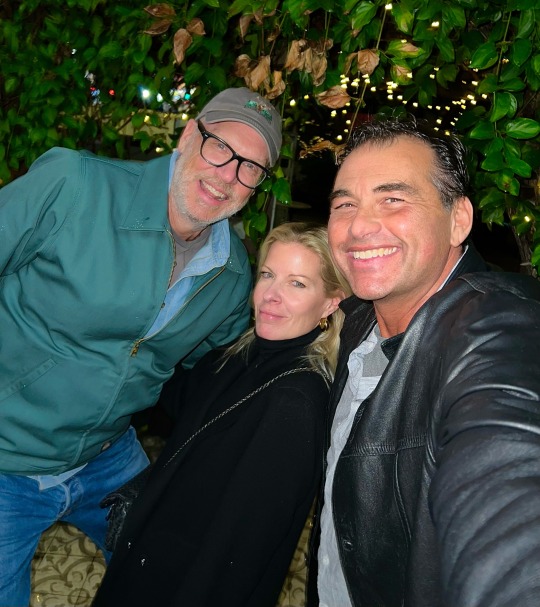





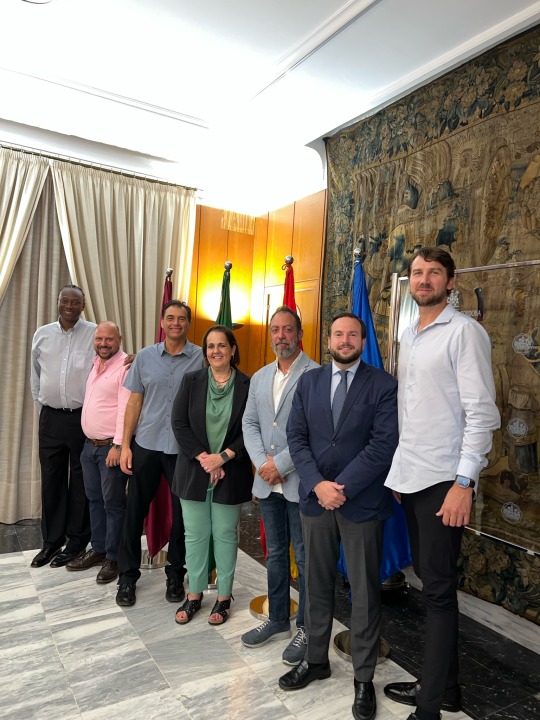
#global star capital#rich cocovich#global star capital funding#richard cocovich#global star capital review#project funding#equity investors#equity capital#capital raising#equity investor#rich cocovich top consultant in private funding#cocovich#(richard cocovich]#richard cocovich and global star capital#[rich cocovich]#rich cocovich review#rich cocovich and global star capital#global star capital customer reviews
0 notes
Text


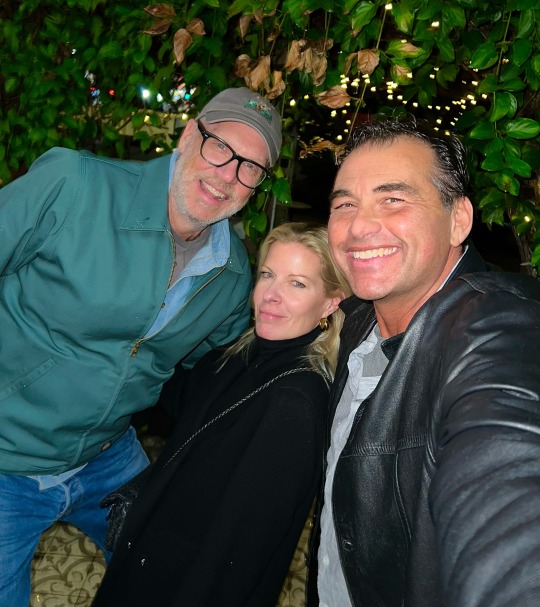



In the past 45 days, Global Star Capital founder Rich Cocovich has met with clients in multiple sectors, executives and established entertainment brass on multiple projects in Los Angeles, Pittsburgh, Phoenix, San Diego, Washington DC and Miami. He is a gearing up for international clients in Spain, Italy, The UAE and South Africa also. If you are a solvent and prepared project principal who understands that high end professional services are not free, not “wrapped into a closing” and not contingent then you are welcome to apply at our website www.globalstarcapital.com beginning in the Our Process section. Projects $1 Million and up are welcome. We are the top experts in private funding with clients in 126 countries and all 50 states since 1991. Our mandatory protocol is etched in stone with fre structure that includes meeting face to face. Over $30 Billion USD awaits our clients from private investors worldwide who cannot be reached without Global Star Capital and our founder.
#richcocovichreviews #richcocovich #globalstarcapital #globalstarcapitalreviews #projectfunding #projectfinance #capitalraising #equityinvesting #equityfunding #topconsultant #privateequity #privatemoney #privatefunding #funding #fundingnews
#rich cocovich#global star capital#richard cocovich#private funding#richard cocovich and global star capital#private equity#equity funding#equity financing#project funding professionals#equity#project funding services#private funding project funding#rich cocovich top consultant in private funding#cocovich#global star capital review#rich cocovich review
0 notes
Text
I'm trying to come up with something clever to say here but I feel like I've been hit by a truck. In a good way. I never thought anything like this would pass in the Midwest, not even in a blue state like IL, because it's simply not the kind of thing anybody campaigns on or even talks about at the gubernatorial level.
This is honestly the perfect legal addendum to NAGPRA, and I'm thrilled it's at the state level. This type of legislation would be way too complex at the federal level, but the individual state responsibilities are manageable, and more importantly, doable.
Here's some of the highlights of what the law does:
It is now the state's responsibility to help return ancestral remains, funerary objects and other important cultural items to tribal nations
The state must follow the lead of tribal nations throughout the repatriation process.
Money must be allocated as part of the state Repatriation and Reinterment Fund to help with the costs of reburial, tribal consultation and the repair of any damage to burial sites, remains or sacred items.
Criminal penalties for the looting and desecration of gravesites are increased, and the law adds a ban on profiteering from human remains and funerary objects through their sale, purchase or exhibition.
Tribal nations must be consulted as soon as possible when Indigenous gravesites are unintentionally disturbed or unearthed — such as during construction projects. (We already had kind of a version of this, but it wasn't strong enough.)
IDNR must set aside and maintain land solely for the reburial of repatriated Native American ancestors and their belongings, as tribal nations have pointed to the lack of protected places for reburial in Illinois as among the highest barriers to repatriation.
Institutions that display human remains that are Native American and any items that were originally buried with those individuals (funerary items) cannot charge admission. You want to display looted grave goods? No money for you. (This is specifically targeting the Dickinson Mounds Museum, which is... well, it started as a guy's private display of Native American skeletons he personally looted. The state took it over in the 90s, but they didn't rebury any of the 230~ human skeletons.)
My favorite comment is this: When asked about what he would say to museums that may push back against the law, Illinois State Rep. Mark L. Walker said: “Too bad.”
7K notes
·
View notes
Text

https://www.justgiving.com/crowdfunding/quills-top-surgery
it’s my 28th birthday in march and i’m crowdfunding for my top surgery! going private is the only option thanks to 4-5 year waiting lists for NHS consultations in the UK, and i haven’t even been referred to a GIC as of now. of course i’ll be putting my own funds towards the costs but at an average cost of £5,000-£8,000 it would take me years to save - a position myself and many other trans people are in, which breaks my heart. i wish trans healthcare was better than this.
i am so unhappy as i am. i want to get married in a few years in a body that feels like my own. i want to be happy with how my clothes fit. i want to not wear a binder every day, especially as a chronic asthmatic. i want to not feel depressed and uncomfortable and sick to my stomach about my chest. i just want to live, instead of feeling like my life is stuck on hold. i want to go into my 30s as a new man.
i’ll keep my justgiving page and my tumblr updated as i go forwards with consultations, finding a surgeon, gender dysphoria referrals and all that jazz! i currently have an appointment to get my dysphoria diagnosis and we'll go from there!
if you can’t donate, i appreciate you regardless, and just sharing this will help enormously. thank you so very much! ⭐️❤️✨
448 notes
·
View notes
Text
2023: Lists Of Governors Who Use Private Jets For Political Consultations With State Fund
2023: Lists Of Governors Who Use Private Jets For Political Consultations With State Fund
Some serving Nigerian governors have expressed their intention to succeed President Muhammadu Buhari in 2023.
Trutells Nigeria reports that the governors are both from the ruling All Progressives Congress (APC) and the Peoples Democratic Party (PDP).
Ahead of their presidential primaries in Abuja, 38 presidential hopefuls have been going around the 36 states and FCT in private jets to woo…

View On WordPress
0 notes
Photo


[”Abortion will soon be banned in 13 states. Here’s which could be next.”
Trigger ban to take effect within a month: Idaho, Utah, Wyoming, North Dakota, South Dakota, Texas, Oklahoma, Missouri, Arkansas, Louisiana, Mississippi, Tennessee, Kentucky
Likely to ban: Iowa, Indiana, Ohio, West Virginia, Alabama, Georgia, South Carolina
Uncertain: Arizona, Montana, Nebraska, Kansas, Wisconsin, Michigan, Pennsylvania, Virginia, North Carolina, Florida
Likely to remain legal: Washington, Oregon, California, Nevada, Colorado, New Mexico, Alaska, Hawaii, Minnesota, Illinois, New York, Maryland, New Jersey, Connecticut, Delaware, Massachusetts, Rhode Island, New Hampshire, Vermont, Maine]
[”Thirteen states have trigger laws that will ban abortion now that Roe is overturned. BUT only three of them go into effect immediately: Kentucky, Louisiana, and South Dakota. If you have an appointment in those states, CALL YOUR CLINIC NOW. They can help you go somewhere else.
Idaho, Tennessee, and Texas have trigger laws that go into effect after 30 days. If you have an abortion appointment in those states, DO NOT ASSUMED IT'S CANCELED. Call your clinic now. You may have 30 days left in your state.
Arkansas, Mississippi, Missouri, North Dakota, Oklahoma, Utah, Wyoming also have trigger laws but they require a government process step to go into effect. If you have an appointment in those states, DO NOT ASSUME IT'S CANCELED. There may be time. Call your clinic NOW."]
--------
It is still legal to travel to states where abortion is legal. The FDA allows abortion pills to be available by mail, and they are approved for the first 10 weeks of pregnancy. Telemedicine abortions will banned in states where abortion is illegal, but international groups like Aid Access will offer online consultations and mail pills to all states.
Your internet activity can be used against you in court. Delete any period tracking apps and do not disclose your pregnancy online. Learn about internet privacy to keep your abortion private and secure.
National resources for info and access to abortion:
Aid Access: https://aidaccess.org/en/
Find an abortion provider: https://www.abortionfinder.org/
National Abortion Federation: https://prochoice.org/#
NAF Hotline (Monday - Friday 8 am - 7 pm EST, Saturday & Sunday
8 am - 4 pm EST): 1-800-772-9100
Now is the time to donate to your local abortion fund. If you live in a state where abortion is likely to stay legal, clinics expect an influx of people from other states looking for healthcare.
National Network of Abortion Funds: http://abortionfunds.org
List of abortion funds in states likely or certain to prohibit abortion:
https://www.thecut.com/article/donate-abortion-fund-roe-v-wade-how-to-help.html
#Im really not the best informed about this just wanted to share some resources because I have a following on here#abortion#roe v wade#roe vs. wade#abortion rights#reproductive choice#reproductive rights#bodily autonomy#pro choice#reproductive health#abortion ban#abortion funds#abortion access#boost#signal boost#abortion resources
10K notes
·
View notes
Text

In the weeks prior to my Mom’s death last fall, I agreed to a six month consulting engagement at a company I’d worked at 14 years ago. I agreed to be the EVP of Transformation and rented a house near the HQ.
This company suffered during the pandemic, was forced into bankruptcy, had to recapitalize and was still having a hard time. I felt some loyalty to the company and a few of my old colleagues who were still there. I hoped I could help save the company.
The good news is that my efforts were very fruitful. The bad news is that the private equity owners were too impatient and decided to sell to a competitor. That wasn’t the outcome I was hoping for, but I feel satisfied that I delivered more than had been expected. As soon as I was disclosed on the pending transaction I decided to end my engagement after only 5 months.
The best news is that I get to retire again and resume goofing off with Beth full time! A side benefit is that my earnings (and a few other donations including from a few Tumblrs) have funded the construction of new latrines at the school Beth and I support in Kovie, Togo.
Construction should start soon and should be completed in time for the next school year.


58 notes
·
View notes
Note
modern Aizen??!! What type of dad would he be? Or husband? What type of life would he have?(job,money,hobbies,etc.)
I love modern Aizen concepts. I've thought so much about this - I have way too many ideas. I'll break this up into chunks for easier reading.
TW: none!

... as a husband:
A very career-oriented, driven man = very busy. There will be some days where you won't physically see him (because your work schedules don't align), but he will call you each day when you have free time.
He's very attentive. He can tell when you're upset, hurt or angry about something, and he'll listen.
He doesn't like nagging and passive aggressiveness. If you're upset with him, be direct! He trusts you and expects you to trust him as well.
He loves cooking with you, especially if you're curious about new recipes, or try something in a restaurant and want to recreate it at home with him.
He doesn't like leaving household chores with you - he tries to meal plan and prep with you. He's the one that offers to hire a cleaner so there's less stress for you.
When he has time off, he will spend it with you. He will plan elaborate, details days off, vacations, anniversaries, etc. - it's his way of "making up" to his intense schedule.
... as a father:
Extremely, and I mean EXTREMELY patient. He may not be all that understanding with his child, but he tries.
I think Aizen "handles" older children better than new borns and infants.
New borns and infants give Aizen a small seed of fear - this tiny, precious child is someone who inherently has to rely on Aizen. I think in this sense, Aizen's philosophy of "the weak need the strong" changes - of course his baby needs him!
Aizen will always, and I mean always, read them bedtime stories. He loves to encourage his child to read more. One of their first gifts from him (once they're old enough/develop memories) is a little bookshelf.
Library days are important! He's one of those parents who will sign up for parent-baby classes at the local library.
Aizen is definitely the "I'm not angry, just disappointed" parent. He won't shout at his child ever, but they develop an inherent respect for him.
I don't think Aizen would like the concept of private schools (inherently classist/elitist), so he's very much fine with his child going to a public school.
Summer vacations are also for travel! He would encourage his child to see the world - he doesn't want them to be ignorant of the world around them.
... his job:
I've talked about this before, but I can see Aizen in some type of medical or education-role (or both!). I often picture him as some kind of psychotherapist (requires a medical degree) at a world-renowned hospital/institute who's also an associate professor at the major university. He would be one of those people who would have the HBSc + MSc + MD + PhD lol
He would also be a graduate-level supervisor for students. But he's very selective on who he takes under his wing (i.e. Ichigo...). He would encourage his students to think critically about what he's teaching them, but also be supportive in their endeavours.
I think Aizen develops his supervisor persona because it was, unfortunately, something he didn't get to experience as a graduate student. His supervisors were very hands-off and while Aizen was an extremely competent student and fellow, I can see him wanting a mentor during that period of his life.
Aizen only sees a few patients a year, on a consultancy-basis, if he's more research-focused. But some years he does go back into the clinical practice route.
Aizen has definitely had a TEDTalk or two.
Aizen is always competing with Urahara for grants and funding lol it pisses him off.
If Aizen is on a thesis committee with Urahara, it frustrates him, but he tries to be nice and polite - often times he's ignoring Urahara in these meetings and at the time of a student's defence.
Aizen would be a notoriously difficult Comprehensive Examiner for PhD students. Again, going back to thinking critically - he expects students in his division/unit/stream to not regurgitate what they've learned, but demonstrate areas of improvement, new techniques, etc.
Aizen teaches one undergrad-level course in psychology, another one in sociology and then one last one in philosophy (at the 300 level). Many undergrad students flock to his office hours.
Overall - financially - Aizen is definitely not hurting for cash.
... his hobbies:
Reading: whether that be manuscripts, chapter proofs, fiction and non-fiction alike. I think Aizen is inherently a student for life type-of-person. He wants to know more, he has such a thirst for knowledge.
Coffee/tea-hopping: he's not one for gimmicky cafes, but Aizen's curious to try new spots for their coffee and tea selections. Even when he travels abroad, he will try local cafes and buy some beans and blends for home (if he likes it).
I think Aizen would still hold on to calligraphy - it's such a rare talent these days I find. It's an expensive hobby for sure - but one he plans and budgets for. Very, very rarely does he sell some of his prints - it's a way for him to decompress.
I think Aizen would be hesitant to introduce his child to calligraphy - he doesn't want them using his expensive inks and pens lol. I think he'd get them a "child" version of them, but he wouldn't pressure them to continue with calligraphy if it doesn't interest them.
In a similar vein, I can see Aizen enjoying playing the piano in his (very limited) spare time (he's trying to master Rachmaninoff and that unbelievably finger span). I don't see him playing the piano necessarily for the music - but rather, I think it's a test of almost all of his senses. It requires his focus, his ability to read music - translate that ability into finger movements, and be able to interpret the composers own feelings into the piece of music. I don't think he'd be able to tell you who his favourite composers were, but he would be able to tell you pieces that gave him a "challenge" (that he conquered). He would enrol his child in piano lessons.
I can see Aizen being into hiking, and maybe mountaineering. I think it gives him a sort of thrill to climb mountains (always reaching to the top).
Weirdly enough, I think he'd be into foraging as well? Foraging for edible mushrooms specifically (I guess there's something to be said with curiosity and mad scientist types).
Aizen avoids social media. He knows of it, he probably has a twitter account for his academic stuff, but that's about it. I also don't see him as a podcast listener - but he has been invited on to podcasts as a guest!
Overall, I think Aizen would have a life similar to a well-known, top-earning clinical researcher! Someone who's constantly learning, but also wants to share that knowledge to a few select students. This leads him to having a very limited home life, but he makes it up with his attentiveness and understanding. I think Aizen would be a devoted partner to a person who is as equally curious as him - someone he can also learn from.
Thanks anon for this ask! I hope this is what you had in mind.
#bleach#aizen sousuke#aizen sosuke#sosuke aizen#sousuke aizen#aizen x reader#aizen headcanon#answered#anonymous#bleach writings
264 notes
·
View notes
Text
Design of Midhope Distillery
The parts of document I'm showing in this post was presented and designed on June 26, 2020

EXECUTIVE SUMMARY
This Design and Access Statement accompanies a Planning Applica- tion for a new Single Malt Scotch Whisky Distillery at Midhope Castle which lies within the Hopetoun Estate on the outskirts of Edinburgh. It is intended this is the first of a series of applications containing proposals to regenerate the Castle, the surrounding listed buildings and landscape setting.
The overall project aims to create an environment to produce, share and market an exceptional whisky. Its success depends not just on the production of whisky but on the ability to invite guests to see the creative process, appreciate its origins and have the time to experi- ence the whisky and the environment. It is intended in the future that the castle will be the venue for a significant part of these activities.


Note, the clients Golden Decanters and Hopetoun estate are the original applicants. Golden Decanters changed their company name since April 2022
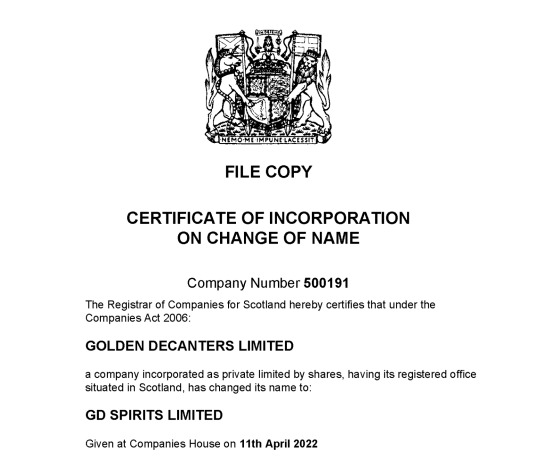
Design Team
Project Manager - Curries & Brown
Currie & Brown works across the public and private sectors, including commercial property, consumer goods, defence, education, funding institutions, government, healthcare, high-tech, hospitality and leisure, industrial, mixed-use developments, nuclear, pharmaceuticals and life sciences, PPP/P3, residential property, retail, trans- portation and logistics and utilities and renewables. wWith our global reach, Currie & Brown brings together a large group of talented professionals to offer our clients a comprehensive range of the services, experience and expertise, together with a significant value added offering.
Planning Consultant - Scott Hobbs Planning
Scott Hobbs Planning (SHP) is an established planning and development consul- tancy founded in 2004, servicing clients throughout the British Isles, for major mixed use, commercial, retail and residential development. The practice has wide ranging and detailed experience in all aspects of planning-related work including national policy shaping, development planning and development management; development framework and master-planning; and consultation processes.
Architect - 56three Architects
56three is a design based Practice with projects covering new build, conservation and refurbishment works throughout the UK.
We have an award winning team of architects, technicians and interior design- ers who are able to provide the full range of architectural services from feasibility through to construction.
Landscape Architect - rankin fraser landscape architects
rankinfraser landscape architecture llp was formed in January 2008. Based in Edin- burgh, Scotland the practice brings together Chris Rankin and Kenny Fraser – two Landscape Architects with over 30 years combined experience of delivering award winning projects from conception through to completion
We combine practice with research and teaching to provide our clients with a thoughtful, creative and professional approach to landscape design and place mak- ing covering public realm, landscape urbanism, housing landscapes, education and health projects in urban and rural situations.
LOCATION
The site is approximately 11.5 miles West of the City of Edinburgh, 5 miles to the North West of Edinburgh airport, 3.5 miles to the West of the South Queensferry, and a little under half a mile South of the Firth of Forth. It has an overall area of 6.9 hectares within the beautifully managed Hopetoun Estate. Hopetoun House is approximately 1 mile East of the site.

SITE
The site is located within Hopetoun Estate but outside the area of the Designated Designed Landscape that surrounds Hopetoun House and Abercorn to the east. The site for the new distillery is located to the immediate west of Midhope Castle.
The Castle is reached via an access road runs for approximately a quarter of a mile, west from the road link between the hamlet of Ab- ercorn and the A904.
The site to the east of the Midhope Burn is largely dense woodland. A Fireworks manufacturing business is currently located in a large clearing near the entrance to the site. This clearing was formerly the location of a Saw Mill.
The access road arrives at a small car park. There is a path that leads to the outer wall of the Castle courtyard.

Midhope Castle is to the north-east of the site with a courtyard and a modest walled garden to the immediate South. Behind the castle, just to the north, is a small derelict Victorian, ancillary building.
In the space to the east of the castle toward the approach road there are two Victorian cottages and a doocot.
The site for the distillery building is to the south-west of the cas-
tle and in an area that is currently occupied by a number of modern agricultural sheds and some hard-standing left from recent utilitarian ancillary structures. The area is functional and has no obvious sig- nificant historic structures. It currently houses the grounds for a tree climbing and chainsaw training company which is in the process of relocating.







HERITAGE CONTEXT
The original Midhope Castle (recorded as “Medhope Castle”) was built in the late 15th century. In 1587 this castle was partially rebuilt.
The castle was extended in 1664 and reached the general arrange- ment and form that can be seen today. Further extensions and altera- tions took place in 1678.
By the early 20th century the castle was in a state of disrepair and the interior timber staircase recorded as being in poor condition.
In 1988 a programme of consolidation and partial restoration was undertaken. A new roof was formed on the West Tower and steelwork was inserted within the shell of the castle to stabilse the structure. New window frames were inserted into the existing openings. This work seems to have arrested any further significant deterioration.
Today the building is in a ruinous state internally, and most of the in- ternal features have been lost, but is generally wind and water tight.
Midhope Castle was designated as a Scheduled Monument in 1950 and was given a Category A listing in 1971 . In 2018 the Scheduled Monument status was removed and the designation was simplified to the current Category A listing.


The Roy Lowlands map of 1754 shows the castle within the wider context of the Hopetoun House Estate. To the north of the castle are a series of geometrically arranged copses either side of an axis that relates to Hopetoun House to the west. Today some of these trees are still visible.
The landscape around Midhope Castle is also visible on this plan - the series of walls that form the courtyard at the castle, and the larger open area to the west.

The 6 inch map of 1854 more shows Midhope Castle in the form that it can be seen today. The approach path from the east, the Doocot, the gamekeeper’s cottage and the walled garden to the south of the castle are visible.
This plan also shows the state of the landscape to the west of the castle. A path or track extended out from the courtyard into the land- scape and a series of gardens were enclosed to the north.
The south edge of the site was defined by a row of trees that aligned with the walled garden.
The remaining traces of these landscape structures have informed the location of the new distillery building and the landscape strategy.
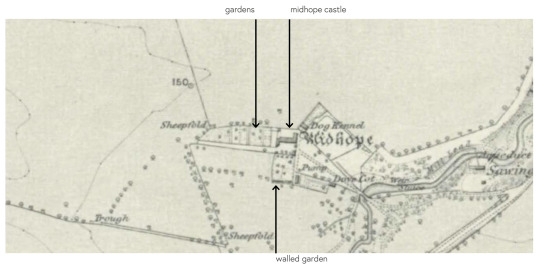
MASTERPLAN APPROACH
The current application is the first in a series of planned phased pro- posals for the site that will initially improve the setting, and stabilise the fabric, of the castle, and later seek to reuse and regenerate the castle.
The construction of the distillery and the production of the whisky need to be the first steps in order to establish the business and generate income in order to progress to the next phases of the wider project.
In the medium term there are also plans to open parts of the castle to facilitate some of visitors who currently visit the site due to the castle’s association with the “Outlander” television series.
There is the ultimate aim to use the castle for visitor functions that are complimentary to the new distillery – tasting spaces, dining, and potentially overnight accommodation.
All of these future works will carefully balance the repair and refur- bishment of the existing historical fabric of the castle and surround- ing landscape features. Further refinement of the timing and content of these next phases will reviewed as the project develops.

VISION
Initial works
The current Planning Application is for the new distillery building together with the immediate landscaping, a new access road and the change of use of Midhope Castle to visitor accommodation.
An application for Listed Building Consent will follow. This will include the repair and refurbishment works to the landscape features around the castle- the reinstatement of the damaged stone piers, the re- gaining of the walled garden and cobbled castle forecourt and the potential removal of derelict outbuildings. It has not been possible to gain access to the site to carry out these surveys due to restrictions imposed by the Covid 19 crisis.
Next steps
Future Planning Applications and Listed Building Applications are planned as the business becomes established. These include plans for a Maltings Building at the former Sawmill site, work to the castle and extensions as appropriate, repurposing of the Dovecot, and other facilities in the grounds of the castle and distillery.


SCOPE OF INITIAL PHASE
It is possible to conceptually divide the site into two areas, they can broadly be described as modern farm building land and the castle grounds. It is not intended that the physical distinction between the areas be over emphasised in the finished design but it is a useful tool in describing the approaches to the specific areas. The distillery is proposed to be on the farm building land, with the main road and the access road coming across the castle grounds.
The farm building land does not have any obvious structures of histor- ic significance, whilst the castle grounds are rich with elements that are historically significant and referred to in the category A listing of the castle and the Category B listing of the Doocot.
The historic influence on the farm building land is most strongly ap- parent in its relationship to the castle grounds. The land spreads in
a relatively level expanse from the castle and forms the base of an approximate bowl. This reinforces the sense that the area that will house the distillery, despite being the larger area, is attendant on the castle as the most substantial historic structure on the site.
Very little work is proposed to the immediate castle grounds in this application. The client wishes to take the time to carefully consider the appropriate design and relationship with the existing buildings. The intention is to intervene in this area as little as possible at this point and only to the extent that is required to access the distillery site without negatively affecting the significant historic fabric.
The castle grounds are subject to ongoing analysis and will be the focus of future applications in subsequent phases.
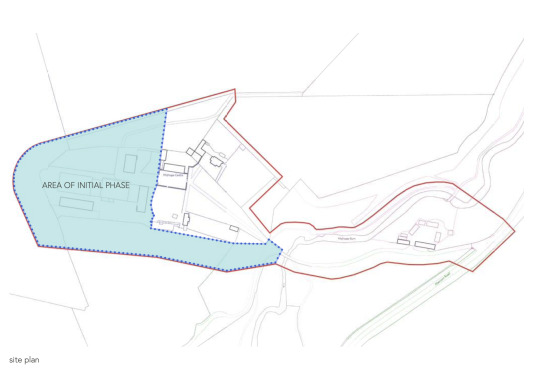
DESIGN PROPOSALS
The distillery is seens as the first phase of a sequence of develop- ments on the wider site aimed at enriching the landscape and improv- ing the setting and fabric of Midhope Castle.
The aspiration is to create a unique place where the production of Whisky, the landscape it draws from and the heritage of the site can be enjoyed. The setting and location is key to the proposal.
The new distillery building will have two main functions. It will pro- duce over 500,000 litres of whisky a year from Barley grown on the Estate. It will also offer visitors the opportunity to see all aspects of the Whisky production process and to enjoy the unique historical set- ting and landscape.
The setting of the distillery is one that has many layers of history. It will be close to Midhope Castle, which is known to date from the fif- teenth century and along with the land around has been altered many times over the subsequent years. The castle was occupied until the 1920s and each periodw has resulted in change. The additions to the castle are clear to see, and there are buildings around the castle that date from the 1800s. The setting shows a timeline of agricultural use and castle shows evidence of the varied occupation that ranges from aristocracy to the workers on the land.
The castle is the embodiment of the historic significance of the site, and this position is to be carefully maintained. The orientation of the new design is lead by the influence of the existing fabric. It’s form will have a larger footprint but a lower height, it will not compete with the castle but rather work alongside it, and by looking toward the castle’s raised entrance create an exciting new dynamic.

SETTING & ACCESS
The approach to the site will be along the existing track which winds through dense woodland to a clearing that is currently used as a car park for visitors to the castle.
From here a new access route is proposed to take service traffic for the distillery to the south, away from the castle and existing cottages.
The existing footpath leads up to the castle courtyard past the listed dovecot building and existing Victorian cottage and outbuildings to the north.
The courtyard sits between the castle and the overgrown walled gar- den to the south. To the west of this enclosed outdoor space is the open area currently given over to light industrial and agricultural use. This largely flat area of land sits within a shallow depression relative to the surrounding wider agricultural landscape. This will be the site of the new distillery.
The distillery begins to be visible on moving through the courtyard. The new building will align with the traces of an route that once ran through this area out to the west.

SETTING & RESPONSE
The new building consists of three, simple shed-like forms.
The largest is a long, pitched roof building that edges the south of the site. This building will contain most of the distillery production areas and spaces for visitors – a display area containing whisky ma- turing in barrels, tasting spaces, and multi-purpose areas that can be used for exhibitions and functions.
To the north is a second smaller pitched roof form that contains the stills and shelters the worm tubs.
To the south a third pitched roof form encloses external tanks and barrel storage.
A service yard is located to the south of the distillery and sits be- tween the new building and the existing embankment. The service yard and the more industrial activity is hidden from view from the surrounding landscape and most importantly is invisible from the ap- proach road and castle. Access to the service yard will be provided by a new road formed to the south of the main site.
The public areas of the distillery will offer views back to the castle and the landscape to the north. The landscape around the distillery will reinstate paths and routes that we once on the site.

DESIGN DEVELOPMENT
The basic form of the new building has been influenced by common simple, robust utilitarian agricultural buildings. From a distance the distillery will appear as a grouping of simple, quiet forms in the land- scape.
The still house will be wrapped in timber giving it an abstract quality. This building will contain the stills and their copper forms will be vis- ible through the glazed gable facing the castle courtyard.
The still house sits in a cooling pond and forms a gathering place at the visitor entrance to the distillery. This entrance aligns with both the reinstated road and wall running east to west but also with the existing track that leaves the site to the north.
A large framed window on the first floor of the distillery offers pano- ramic views back to the castle, across the structured landscape close to the distillery and further to the agriculutral fields of the estate beyond. These large windows will be edged in bronze metal cladding,
The maturation display area at the east end of the building will be clad in stained or charred slatted timber that will allow in direct light into the space. On dark evenings this end of the building will glow and act as a lantern drawing visitors across the landscape from the castle.





As I showed in my previous post, these plans are now revised and filed again on 8 February 2024, awaiting a decision. This document was filed on 21 March 2024. There are some minor changes to the original plans which were already approved in 2021
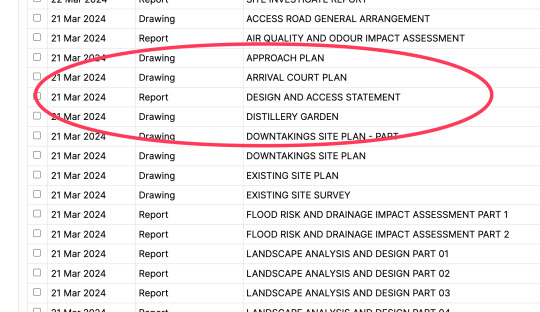
52 notes
·
View notes
Text

Global Star Capital founder Rich Cocovich recently met with new clients in Newport Beach California USA on a $5 Million project to bring a new alcohol spirit to market. Since 1991, Global Star Capital and Cocovich have assisted project principals in 126 Countries and all states in America to align private funding. If you are a solvent and prepared project principal who understands that high end professionals and their services are not free, not commission based, not contingent, not wrapped into a closing and not pro-bono, then you are welcome to apply at our main company website www.globalstarcapital.com beginning in the Our Process section. Our protocol is etched in stone and is non-negotiable. Over $30 Billion USD from private investors world wide awaits the projects we represent.
#richcocovichreviews #richcocovich #capitalraising #cocovich #globalstarcapitalreviews #globalstarcapital #projectfinance #projectfunding #equityinvesting #equityfunding
#globalstarcapital#rich cocovich#richard cocovich#global star capital#global star capital review#rich cocovich review#cocovich#privatefunding#private funding project funding#global star capital projects#project funding#investors for projects#private funding#top private funding consultant#private banking#rich cocovich top consultant in private funding#private funding consultants#equity investors#project equity#global capital reviews#capital raising
0 notes
Text

Global Star Capital founder Rich Cocovich recently met with new clients in Newport Beach California USA on a $5 Million project to bring a new alcohol spirit to market. Since 1991, Global Star Capital and Cocovich have assisted project principals in 126 Countries and all states in America to align private funding. If you are a solvent and prepared project principal who understands that high end professionals and their services are not free, not commission based, not contingent, not wrapped into a closing and not pro-bono, then you are welcome to apply at our main company website www.globalstarcapital.com beginning in the Our Process section. Our protocol is etched in stone and is non-negotiable. Over $30 Billion USD from private investors world wide awaits the projects we represent.
#richcocovichreviews #richcocovich #capitalraising #cocovich #globalstarcapitalreviews #globalstarcapital #projectfinance #projectfunding #equityinvesting #equityfunding
#global star capital#rich cocovich#global star capital funding#richard cocovich#global star capital review#richcocovich#rich cocovich reviews#globalstarcapital#rich cocovich review#richard cocovich review#top private funding consulting firm#private equity#private funding#project funding#equity financing#equity investor#cocovich#rich cocovich top consultant in private funding
1 note
·
View note
Text

Global Star Capital founder Rich Cocovich recently met with new clients in Newport Beach California USA on a $5 Million project to bring a new alcohol spirit to market. Since 1991, Global Star Capital and Cocovich have assisted project principals in 126 Countries and all states in America to align private funding. If you are a solvent and prepared project principal who understands that high end professionals and their services are not free, not commission based, not contingent, not wrapped into a closing and not pro-bono, then you are welcome to apply at our main company website www.globalstarcapital.com beginning in the Our Process section. Our protocol is etched in stone and is non-negotiable. Over $30 Billion USD from private investors world wide awaits the projects we represent.
#richcocovichreviews #richcocovich #capitalraising #cocovich #globalstarcapitalreviews #globalstarcapital #projectfinance #projectfunding #equityinvesting #equityfunding
#rich cocovich#global star capital#richard cocovich#private funding#richard cocovich and global star capital#projectfunding#rich cocovich private funding expert#private funding intermediaries#equity financing#private equity#equity funding#cocovich#rich cocovich top consultant in private funding
0 notes
Text
Universities secretly sold their students to online casinos

End-stage capitalism’s defining characteristic is making money rather than making things. Think of how Jack Welch destroyed GE by transforming it from a manufacturing company to a financial engineering shop:
https://the.ink/p/like-capitalism-itself-business-journalism
Hospitals are invoice-generating factories with a sideline in medicine. The electronic health record only incidentally records your health. Its primary purpose is to record your billing-codes:
https://www.beckershospitalreview.com/ehrs/physicians-spending-nearly-2-hours-a-day-on-ehr-tasks-outside-work.html
And universities? Ugh. Most universities now have more administrators than faculty:
https://www.jamesgmartin.center/2022/08/administrative-bloat-harms-teaching-and-learning/
Much of that “administration” comes down to begging alums for money to funnel into vast endowments, but heaven forfend those endowments would be used to cover payroll and other essentials, even in a pandemic emergency:
https://www.forbes.com/sites/reneemorad/2020/04/21/harvard-under-fire-for-accepting-nearly-9-million-in-coronavirus-relief-funds/
Nor are endowment funds available to pay the education workers who actually teach students, but can’t afford the rent, food, or family:
https://www.capradio.org/articles/2022/11/14/nearly-50000-university-of-california-graduate-student-employees-launch-open-ended-strike/
The point of the endowment is to increase the size of the endowment — not to improve educational outcomes or research. That’s why Harvard is “A hedge fund that has a university”:
https://www.wsj.com/articles/a-hedge-fund-that-has-a-university-1510615228
This is the overwhelming logic of capital: capital exists to increase capital, and the underlying mechanism for that increase is irrelevant. This was the reasoning behind the surreal bid to sell the .ORG nonprofit registry to a secretive hedge-fund.
The point of the .ORG registry is to host domain records for nonprofits; incidentally, this throws off some extra money that is turned into grants for public interest projects. The board decided to sell off .ORG so it could make more of these grants, despite the fact that this would compromise the mission of hosting .ORG domain records:
https://www.eff.org/press/releases/org-domain-registry-sale-ethos-capital-rejected-stunning-victory-public-interest
Likewise, this was the reasoning of the Mountain Equipment Co-Op board when they decided to sell off the member-owned co-op (“the most trusted brand in Canada”) to a US private equity fund without consulting the members:
https://pluralistic.net/2020/09/16/spike-lee-joint/#casse-le-mec
The expand-capital-at-all-costs mindset is a virulent species of brain worms. It’s the basis for surreal movements like effective altruism, which encourages people who want to do good for the world to sell out to the most toxic industries on Earth, amass gigantic fortunes, and then, upon their death, donate them to causes that in some way remediate the harms they themselves wreaked:
https://en.wikipedia.org/wiki/Earning_to_give
In his new book Survival of the Richest, Douglas Rushkoff calls this “The Mindset” — “I need to make vast amounts of money, no matter what the consequences, or I will not be able to afford to insulate myself from the consequences of how I made all that money”:
https://pluralistic.net/2022/09/13/collapse-porn/#collapse-porn
Once you let people with The Mindset anywhere near your institution, they will take it over and turn it into a paperclip-maximizing killing machine, one that abandons and then betrays its mission to increase its profits, eventually killing its host. Anything that can’t go on forever will eventually stop:
https://doctorow.medium.com/anything-that-cant-go-on-forever-will-eventually-stop-110ba9711133
That’s what’s happened to higher ed. It’s not just the payroll full of starving adjuncts, facilities workers, etc. It’s not just the way that universities join forces with textbook monopolists to gouge their students:
https://pluralistic.net/2021/10/07/markets-in-everything/#textbook-abuses
Beyond academics having to rely on food-stamps, students going into lifetime debt to enrich predatory textbook monopolies, and the other horrors of financialized higher ed, there’s the special evil of college sports.
Like all finance-bro motivated reasoning, college sports are sold as a way to do well by doing good: “Look! We’re giving poor people a chance at a great education based on their physical prowess, and we’re racking up tons of money for the university!”
But — like all finance schemes — college sports is a self-licking ice-cream cone that destroys the lives of the people who generate value for it, even as it devours its host institution from within.
Did you know that until very recently, college athletes weren’t allowed to make a penny from their labor?
https://www.scotusblog.com/2021/06/in-unanimous-ruling-court-agrees-with-athletes-that-ncaa-violated-antitrust-laws/
Did you know that those same athletes experience lifelong brain injuries?
https://jamanetwork.com/journals/jamanetworkopen/fullarticle/2791303
Did you know that college sports are a cesspit of long-term, officially tolerated sexual abuse?
https://www.theguardian.com/sport/2021/nov/30/ohio-state-michigan-doctors-sexual-abuse-college-football
Did you know that the highest paid public employee in many states is a football coach at a state college?
https://www.profootballnetwork.com/highest-paid-college-football-coaches-2022/
Did you know that college coaches conspired with the rich parents to steal sport-related admission slots from poor kids and give them to mediocre winners of the orifice-lottery?
https://en.wikipedia.org/wiki/Varsity_Blues_scandal
In many universities — whether public or private — the sports program effectively runs the show. Take the University of New Hampshire: back in 2016, a university librarian named Robert Morin left his life’s savings to the school after 50 years of service. Morin lived frugally for that half century and amassed a personal fortune of $4m.
He believed so deeply in the university’s mission that he turned it all over to the school without any restrictions. Talk about earning to give! The university blew Morin’s gift on a new jumbotron for their sports stadium:
https://www.washingtonpost.com/news/morning-mix/wp/2016/09/16/university-to-buy-1-million-football-scoreboard-with-thrifty-librarians-money-outraging-critics/
The people who see universities as inconvenient adjuncts to exploitative sports teams know that there are still rivals within higher ed who think the point of the school is to educate students.
That’s why the universities that arranged to allow sports gambling websites to target the young people in their care did so in secret.
https://www.nytimes.com/2022/11/20/business/caesars-sports-betting-universities-colleges.html?unlocked_article_code=AAAAAAAAAAAAAAAACEIPuonUktbfqYhlSVUZAybfQMMmqBCdnr_EybEnj2XlaTONTixe1KEfDpSc-kHCILdlZsU-xS-aWN5MK_okQ_h2w-BSJAptVwys6NOiqagyHh8U-8i1T39kmNXER6w5-jvnKWDmIe5ymOTn-hvbbzH1XKzbg2lxIVpvvZY2d12t3yMDwKmVFfVnmYUrhYdXDZ54TT8KZiWY7bK_W1glZoLwPlyL4RI2WupZRTnQgdWfjrsCew5TAl7FJ2httSd-sJgPfYNKY9usakIoa8H8gr4OCmd3LYvPBpQ5RILck70Coqf9dPDE9RFVhqXegnp2EK4F
Writing for the New York Times, Anna Betts, Andrew Little, Elizabeth Sander, Alexandra Tremayne-Pengelly and Walt Bogdanich reveal the extraordinary corruption and depravity of college administrators who colluded with sports book companies to bring gambling to campus.
Implicated in the scandal are such top schools as Michigan State, U Colorado Bolder, Louisiana State, Syracuse and Texas Christian Univeristy (mission: “to educate individuals to think and act as ethical leaders and responsible citizens”).
On the casino side, the major player is Caesar’s, which is only fitting — Caesar’s was driven to bankruptcy by private equity who managed to financialize a casino into ruin:
https://www.ft.com/content/a0ed27c6-a2d4-11e7-b797-b61809486fe2
Caesar’s offered universities millions of dollars for the right to directly sports betting to students. The MSU deal, brokered by university officials Paul Schager and Alan Haller, was worth $8.4m. That is to say, Caesar’s was asking the university to help it drain at least $8.4m from students’ bank accounts in order to turn a profit.
Louisiana State U did a similar deal with Caesar’s, and then embarked on a direct marketing campaign to sell sports gambling to students who were too young to legally place a bet.
LSU says this was a mistake. Cody Worsham, a university official who holds two offices — associate athletic director and chief brand officer (!!) — said that Caesar’s and LSU “share a commitment to responsible, age-appropriate marketing.”
Meanwhile, U Colorado Boulder struck a deal where it earned a $30 bounty every time a student went from non-gambler to gambler — in other words, Boulder didn’t make money by advertising gambling to students — it made money only if its students started gambling.
These student gambling programs are designed to keep children betting even if they lose money, with teaser offers that refund some losses if students keep placing bets.
This is obviously unsavory stuff. That’s why the architects of these programs went to enormous lengths to keep it secret. The state schools involved funneled their deals through private marketing agencies that were shielded from FOIA requests, specifically to prevent the public from learning how public universities were conducting their affairs.
As MSU executive associate athletic director Paul Schager put it: “With the multimedia rights holder, public institutions like Michigan State no longer have to disclose all those sponsorship deals. This helps with the sponsors being able to spend what they feel is appropriate without having the public or employees or stockholders question that investment.”
The deals themselves are far-reaching. As part of MSU’s Caesar’s deal, tailgate parties before big games would be “Caesarized,” with the casino providing ad-copy for the live announcers to read to attendees. As a figleaf, $25,000 of the millions that MSU received from Caesar’s was earmarked for gambling addiction education.
The deals weren’t just kept secret from the public — they were also hidden from top university oversight. At UC Bolder, the Board of Regents was informed of the deal mere hours before it was announced to the public.
These deals have only been running for a couple months and it’s too soon to chart the long-term harms they’ll create in the student body. But, the Times* notes, there is an one harm that surfaced almost immediately: student athletes are now subject to vicious abuse by their fellow students, who lose money they can’t afford when their peers lose a game.
[Image ID: A gaudy casino floor. In the foreground is a figure in college graduation robes giving a double thumbs-up. His head is a grinning skull with a mortarboard.]
665 notes
·
View notes
Note
Hello everyone, my name is George and I'm a transgender man. I'm reaching out to share a bit of my journey with you all. I'm currently seeking access to private endocrinology consultations to begin hormone therapy as part of my transition. Unfortunately, these consultations come with a significant cost that I'm unable to cover on my own. That's why I'm launching this campaign. I'm asking for your help to raise funds to cover the expenses of these initial consultations. Any contribution, no matter how small, would mean the world to me! Thank you so much for your support.
So not only are the inbox scammers pretending to be Palestinians, but they’re also pretending to be trans people too. Cool. Cool cool cool.
Get bent
PSA: be wary of big long asks in your inbox asking for money. The blogs are usually freshly made & only have a few generic popular posts to make them look real. Block ‘em or report and move on
29 notes
·
View notes
Text
This story is part of a joint investigation between Lighthouse Reports and WIRED. To read other stories from the series, click here.
Mitch Daniels is a numbers guy, a cost-cutter. In the early 2000s, he tried and failed to rein in congressional spending under then-US president George W. Bush. So when he took office as Indiana governor in 2005, Daniels was ready to argue once again for fiscal discipline. He wanted to straighten out Indiana’s state government, which he deemed rife with dysfunction. And he started with its welfare system. “That department had been rocked by a series of criminal indictments, with cheats and caseworkers colluding to steal money meant for poor people,” he later said.
Daniels’ solution took the form of a $1.3 billion, 10-year contract with IBM. He had lofty ambitions for the project, which started in 2006, claiming it would improve the benefits service for Indiana residents while cracking down on fraud, ultimately saving taxpayers billions of dollars.
But the contract was a disaster. It was canceled after three years, and IBM and Indiana spent a decade locked in a legal battle about who was to blame. Daniels described IBM’s sweeping redesign and automation of the system—responsible for deciding who was eligible for everything from food stamps to medical cover—as deficient. He was adamant, though, that outsourcing a technical project to a company with expertise was the right call. “It was over-designed,” he said. “Great on paper but too complicated to work in practice.” IBM declined a request for comment.
In July 2012, Judge David Dryer of the Marion County Superior Court ruled that Indiana had failed to prove IBM had breached its contract. But he also delivered a damning verdict on the system itself, describing it as an untested experiment that replaced caseworkers with computers and phone calls. “Neither party deserves to win this case,” he said. “This story represents a ‘perfect storm’ of misguided government policy and overzealous corporate ambition.”
That might have been an early death knell for the burgeoning business of welfare state automation. Instead, the industry exploded. Today, such fraud systems form a significant part of the nebulous “govtech” industry, which revolves around companies selling governments new technologies with the promise that new IT will make public administration easier-to-use and more efficient. In 2021, that market was estimated to be worth €116 billion ($120 billion) in Europe and $440 billion globally. And it’s not only companies that expect to profit from this wave of tech. Governments also believe modernizing IT systems can deliver big savings. Back in 2014, the consultancy firm McKinsey estimated that if government digitization reached its “full potential,” it could free up $1 trillion every year.
Contractors around the world are selling governments on the promise that fraud-hunting algorithms can help them recoup public funds. But researchers who track the spread of these systems argue that these companies are often overpaid and under-supervised. The key issue, researchers say, is accountability. When complex machine learning models or simpler algorithms are developed by the private sector, the computer code that gets to define who is and isn’t accused of fraud is often classed as intellectual property. As a result, the way such systems make decisions is opaque and shielded from interrogation. And even when these algorithmic black holes are embroiled in high-stakes legal battles over alleged bias, the people demanding answers struggle to get them.
In the UK, a community group called the Greater Manchester Coalition of Disabled People is trying to determine whether a pattern of disabled people being investigated for fraud is linked to government automation projects. In France, the digital rights group La Quadrature du Net has been trying for four months to find out whether a fraud system is discriminating against people born in other countries. And in Serbia, lawyers want to understand why the introduction of a new system has resulted in hundreds of Roma families losing their benefits. “The models are always secret,” says Victoria Adelmant, director of New York University’s digital welfare state project. “If you don’t have transparency, it’s very difficult to even challenge and assess these systems.”
The rollout of automated bureaucracy has happened quickly and quietly, but it has left a trail of scandals in its wake. In Michigan, a computer system used between 2013 and 2015 falsely accused 34,000 people of welfare fraud. A similar thing happened in Australia between 2015 and 2019, but on a larger scale: The government accused 400,000 people of welfare fraud or error after its social security department started using a so-called robodebt algorithm to automatically issue fines.
Another scandal emerged in the Netherlands in 2019 when tens of thousands of families—many of them from the country’s Ghanaian community—were falsely accused of defrauding the child benefits system. These systems didn’t just contribute to agencies accusing innocent people of welfare fraud; benefits recipients were ordered to repay the money they had supposedly stolen. As a result, many of the accused were left with spiraling debt, destroyed credit ratings, and even bankruptcy.
Not all government fraud systems linked to scandals were developed with consultancies or technology companies. But civil servants are increasingly turning to the private sector to plug knowledge and personnel gaps. Companies involved in fraud detection systems range from giant consultancies—Accenture, Cap Gemini, PWC—to small tech firms like Totta Data Lab in the Netherlands and Saga in Serbia.
Experts in automation and AI are expensive to hire and less likely to be wooed by public sector salaries. When the UK surveyed its civil servants last year, confidence in the government’s ability to use technology was low, with around half of respondents blaming an inability to hire top talent. More than a third said they had few or no skills in artificial intelligence, machine learning, or automation. But it’s not just industry experience that makes the private sector so alluring to government officials. For welfare departments squeezed by budget cuts, “efficiency” has become a familiar buzzword. “Quite often, a public sector entity will say it is more efficient for us to go and bring in a group of consultants,” says Dan Sheils, head of European public service at Accenture.
The public sector lacks the expertise to create these systems and also to oversee them, says Matthias Spielkamp, cofounder of German nonprofit Algorithm Watch, which has been tracking automated decision-making in social welfare programs across Europe since 2017. In an ideal world, civil servants would be able to develop these systems themselves and have an in-depth understanding of how they work, he says. “That would be a huge difference to working with private companies, because they will sell you black-box systems—black boxes to everyone, including the public sector.”
In February 2020, a crisis broke out in the Dutch region of Walcheren as officials realized they were in the dark about how their own fraud detection system worked. At the time, a Dutch court had halted the use of another algorithm used to detect welfare fraud, known as SyRI, after finding it violated people’s right to privacy. Officials in Walcheren were not using SyRI, but in emails obtained by Lighthouse Reports and WIRED through freedom-of-information requests, government employees had raised concerns that their algorithm bore striking similarities to the one just condemned by the court.
Walcheren’s system was developed by Totta Data Lab. After signing a contract in March 2017, the Dutch startup developed an algorithm to sort through pseudonymous information, according to details obtained through a freedom-of-information request. The system analyzed details of local people claiming welfare benefits and then sent human investigators a list of those it classified as most likely to be fraudsters.
The redacted emails show local officials agonizing over whether their algorithm would be dragged into the SyRI scandal. “I don’t think it is possible to explain why our algorithm should be allowed while everyone is reading about SyRI,” one official wrote the week after the court ruling. Another wrote back with similar concerns. “We also do not get insight from Totta Data Lab into what exactly the algorithm does, and we do not have the expertise to check this.” Neither Totta nor officials in Walcheren replied to requests for comment.
When the Netherlands’ Organization for Applied Scientific Research, an independent research institute, later carried out an audit of a Totta algorithm used in South Holland, the auditors struggled to understand it. “The results of the algorithm do not appear to be reproducible,” their 2021 report reads, referring to attempts to re-create the algorithm’s risk scores. “The risks indicated by the AI algorithm are largely randomly determined,” the researchers found.
With little transparency, it often takes years—and thousands of victims—to expose technical shortcomings. But a case in Serbia provides a notable exception. In March 2022, a new law came into force which gave the government the green light to use data processing to assess individuals’ financial status and automate parts of its social protection programs. The new socijalna karta, or social card system, would help the government detect fraud while making sure welfare payments were reaching society’s most marginalized, claimed Zoran Đorđević, Serbia’s minister of social affairs in 2020.
But within months of the system’s introduction, lawyers in the capital Belgrade had started documenting how it was discriminating against the country’s Roma community, an already disenfranchised ethnic minority group.
Mr. Ahmetović, a welfare recipient who declined to share his first name out of concern that his statement could affect his ability to claim benefits in the future, says he hadn’t heard of the social card system until November 2022, when his wife and four children were turned away from a soup kitchen on the outskirts of the Serbian capital. It wasn’t unusual for the Roma family to be there, as their welfare payments entitled them to a daily meal provided by the government. But on that day, a social worker told them their welfare status had changed and that they would no longer be getting a daily meal.
The family was in shock, and Ahmetović rushed to the nearest welfare office to find out what had happened. He says he was told the new social card system had flagged him after detecting income amounting to 110,000 Serbian dinars ($1,000) in his bank account, which meant he was no longer eligible for a large chunk of the welfare he had been receiving. Ahmetović was confused. He didn’t know anything about this payment. He didn’t even have his own bank account—his wife received the family’s welfare payments into hers.
With no warning, their welfare payments were slashed by 30 percent, from around 70,000 dinars ($630) per month to 40,000 dinars ($360). The family had been claiming a range of benefits since 2012, including financial social assistance, as their son’s epilepsy and unilateral paralysis means neither parent is able to work. The drop in support meant the Ahmetovićs had to cut back on groceries and couldn’t afford to pay all their bills. Their debt ballooned to over 1 million dinars ($9,000).
The algorithm’s impact on Serbia’s Roma community has been dramatic. Ahmetović says his sister has also had her welfare payments cut since the system was introduced, as have several of his neighbors. “Almost all people living in Roma settlements in some municipalities lost their benefits,” says Danilo Ćurčić, program coordinator of A11, a Serbian nonprofit that provides legal aid. A11 is trying to help the Ahmetovićs and more than 100 other Roma families reclaim their benefits.
But first, Ćurčić needs to know how the system works. So far, the government has denied his requests to share the source code on intellectual property grounds, claiming it would violate the contract they signed with the company who actually built the system, he says. According to Ćurčić and a government contract, a Serbian company called Saga, which specializes in automation, was involved in building the social card system. Neither Saga nor Serbia’s Ministry of Social Affairs responded to WIRED’s requests for comment.
As the govtech sector has grown, so has the number of companies selling systems to detect fraud. And not all of them are local startups like Saga. Accenture—Ireland’s biggest public company, which employs more than half a million people worldwide—has worked on fraud systems across Europe. In 2017, Accenture helped the Dutch city of Rotterdam develop a system that calculates risk scores for every welfare recipient. A company document describing the original project, obtained by Lighthouse Reports and WIRED, references an Accenture-built machine learning system that combed through data on thousands of people to judge how likely each of them was to commit welfare fraud. “The city could then sort welfare recipients in order of risk of illegitimacy, so that highest risk individuals can be investigated first,” the document says.
Officials in Rotterdam have said Accenture’s system was used until 2018, when a team at Rotterdam’s Research and Business Intelligence Department took over the algorithm’s development. When Lighthouse Reports and WIRED analyzed a 2021 version of Rotterdam’s fraud algorithm, it became clear that the system discriminates on the basis of race and gender. And around 70 percent of the variables in the 2021 system—information categories such as gender, spoken language, and mental health history that the algorithm used to calculate how likely a person was to commit welfare fraud—appeared to be the same as those in Accenture’s version.
When asked about the similarities, Accenture spokesperson Chinedu Udezue said the company’s “start-up model” was transferred to the city in 2018 when the contract ended. Rotterdam stopped using the algorithm in 2021, after auditors found that the data it used risked creating biased results.
Consultancies generally implement predictive analytics models and then leave after six or eight months, says Sheils, Accenture’s European head of public service. He says his team helps governments avoid what he describes as the industry’s curse: “false positives,” Sheils’ term for life-ruining occurrences of an algorithm incorrectly flagging an innocent person for investigation. “That may seem like a very clinical way of looking at it, but technically speaking, that's all they are.” Sheils claims that Accenture mitigates this by encouraging clients to use AI or machine learning to improve, rather than replace, decision-making humans. “That means ensuring that citizens don’t experience significantly adverse consequences purely on the basis of an AI decision.”
However, social workers who are asked to investigate people flagged by these systems before making a final decision aren’t necessarily exercising independent judgment, says Eva Blum-Dumontet, a tech policy consultant who researched algorithms in the UK welfare system for campaign group Privacy International. “This human is still going to be influenced by the decision of the AI,” she says. “Having a human in the loop doesn’t mean that the human has the time, the training, or the capacity to question the decision.”
Despite the scandals and repeated allegations of bias, the industry building these systems shows no sign of slowing. And neither does government appetite for buying or building such systems. Last summer, Italy’s Ministry of Economy and Finance adopted a decree authorizing the launch of an algorithm that searches for discrepancies in tax filings, earnings, property records, and bank accounts to identify people at risk of not paying their taxes.
But as more governments adopt these systems, the number of people erroneously flagged for fraud is growing. And once someone is caught up in the tangle of data, it can take years to break free. In the Netherlands’ child benefits scandal, people lost their cars and homes, and couples described how the stress drove them to divorce. “The financial misery is huge,” says Orlando Kadir, a lawyer representing more than 1,000 affected families. After a public inquiry, the Dutch government agreed in 2020 to pay the families around €30,000 ($32,000) in compensation. But debt balloons over time. And that amount is not enough, says Kadir, who claims some families are now €250,000 in debt.
In Belgrade, Ahmetović is still fighting to get his family’s full benefits reinstated. “I don’t understand what happened or why,” he says. “It’s hard to compete against the computer and prove this was a mistake.” But he says he’s also wondering whether he’ll ever be compensated for the financial damage the social card system has caused him. He’s yet another person caught up in an opaque system whose inner workings are guarded by the companies and governments who make and operate them. Ćurčić, though, is clear on what needs to change. “We don’t care who made the algorithm,” he says. “The algorithm just has to be made public.”
Additional reporting by Gabriel Geiger and Justin-Casimir Braun.
161 notes
·
View notes